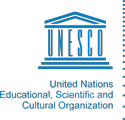2014. 5 p.
Periodical title:
Journal of the International AIDS Society, 17:19035
Description:
Introduction: The HIV pandemic disproportionately impacts young women. Worldwide, young women aged 15–24 are infected with HIV at rates twice that of young men, and young women alone account for nearly a quarter of all new HIV infections. The incommensurate HIV incidence in young – often poor – women underscores how social and economic inequalities shape the HIV epidemic. Confluent social forces, including political and gender violence, poverty, racism, and sexism impede equal access to therapies and effective care, but most of all constrain the agency of women. Methods: HIV prevalence data was compiled from the 2010 UNAIDS Global Report. Gender inequality was assessed using the 2011 United Nations Human Development Report Gender Inequality Index (GII). Logistic regression models were created with predominant mode of transmission (heterosexual vs. MSM/IDU) as the dependent variable and GII, Muslim vs. non-Muslim, Democracy Index, male circumcision rate, log gross national income (GNI) per capita at purchasing power parity (PPP), and region as independent variables. Results and discussion: There is a significant correlation between having a predominantly heterosexual epidemic and high gender inequality across all models. There is not a significant association between whether a country is predominantly Muslim, has a high/low GNI at PPP, has a high/low circumcision rate, and its primary mode of transmission. In addition, there are only three countries that have had a generalized epidemic in the past but no longer have one: Cambodia, Honduras, and Eritrea. GII data are available only for Cambodia and Honduras, and these countries showed a 37 and 34% improvement, respectively, in their Gender Inequality Indices between 1995 and 2011. During the same period, both countries reduced their HIV prevalence below the 1% threshold of a generalized epidemic. This represents limited but compelling evidence that improvements in gender inequality can lead to the abatement of generalized epidemics. Conclusions: Gender inequality is an important factor in the maintenance – and possibly in the establishment of – generalized HIV epidemics. We should view improvements in gender inequality as part of a broader public health strategy.
Themes:
Populations:
Resource types:
Keywords:
Languages:
Record created by:
IIEP


